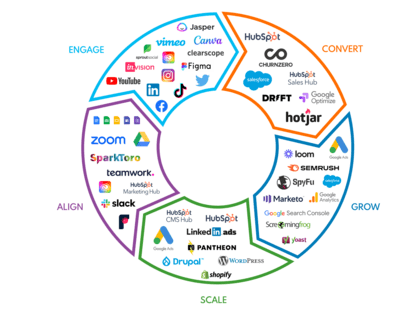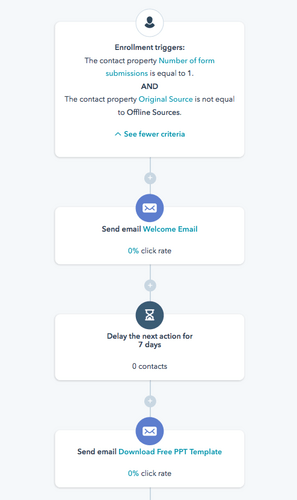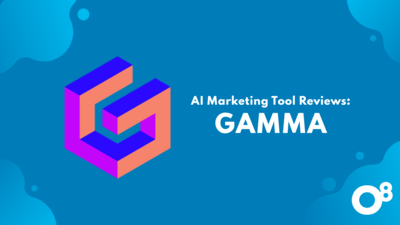
- Summary
- Common Challenges, Mistakes, and Solutions
- How Manufacturers Can Create a Strong Online Presence
- Using Inbound Marketing in Manufacturing
- Conversion Rate Optimization for Manufacturers
- Nurture Qualified Leads
- Data and Analytics for Manufacturers
- Marketing Strategies for Manufacturers Conclusion
The manufacturing industry often struggles due to outdated technological practices and limited resources. Finding the best manufacturing marketing strategies can be tricky sometimes, but it can also significantly benefit manufacturing companies long term. With the internet making it easier to promote businesses on a larger scale and at a faster speed, it is vital that manufacturing companies embrace the practices of B2B digital marketing so they can take advantage of the effective strategies that come with them. This article will provide some essential tips for manufacturers to use while adapting their marketing plans.
Common Challenges, Mistakes, and Solutions
Manufacturers run into their fair share of challenges, most of which are caused by common mistakes that hinder the amounts of outreach and sales the industry is capable of. Fortunately, due to the increasing adaptability of online businesses across the globe, there are several straightforward and effective ways to correct these mistakes and lessen these challenges to improve the overall functionality of the company and its marketing prowess.
Update the marketing technology (martech) stack
In the age of online marketing, paper spreadsheets are no longer the best method of tracking a company’s progress. Most stages of the buyer’s journey take place online, and it is crucial that manufacturers remain up-to-date on digital marketing.
The company should have a functioning website that is updated with the latest marketing automation software. One example of an effective automation tool is HubSpot, which is very popular with marketing teams. Having a strong presence on Google and other search engines is another major step in digitizing marketing efforts, and using search engine optimization (SEO) makes it easier for the website to be found.
At O8, these are some of the Marketing Technology tools we use to help clients move customers through their journey.

Manufacturers must be informative
Conducting business transactions online allows faster and more cost-effective communication. Companies should use email marketing as a way to reach out to potential customers with a systematic and strategic cadence.
It is important to produce educational content that fills a need for potential customers. It is not a good idea to aimlessly pump out content, because it can result in people discarding the emails as annoying and reputation-ruining spam. Instead, companies should have an email list of prospective customers from a target audience, and customize the content to address the pain points of manufacturing customers.
Utilize more outside resources
Outsourcing marketing resources is another strategy that builds company networking. Manufacturing companies should rely on marketing agencies that can cater to their needs. Marketing agencies can provide more resources, knowledge, and fresh perspectives. Outsourcing is also cost-effective, accessible, and thorough — as you have a full-service marketing team to help you with a variety of needs.
How Manufacturers Can Create a Strong Online Presence
Considering the extensive role that the internet plays in daily life, along with the fading prominence of some forms of traditional media, such as printed advertisements, it is crucial that every manufacturing company have a notable online presence.
As mentioned before, the company should have a strong presence on Google, with a well-organized website that is updated regularly. The website can and should include multiple sources of helpful information that make the buying journey less of a hassle; white papers, product pages, case studies, pricing information, and newsletters that include the most recent information and/or access to informational webinars.
Regular social media activity is another smart marketing tactic for manufacturers, especially if a company is active on multiple social media platforms at once. It helps companies post high-quality digital advertisements, find buyer personas and quality leads from the target market, connect with both prospective and existing customers, and assist with the buying process.
Platforms to use include LinkedIn, Instagram, Facebook, Twitter, WhatsApp, TikTok, and more. These channels make it easier and faster for customers to communicate their purchasing decision. Suppose the customers are satisfied with this service. In that case, they may use social media to send referrals to other B2B companies that the company can collaborate with, or tell other people in their lives about their positive experience, which can increase brand awareness.
Advertising online has become a widely-used element of marketing campaigns everywhere because, like digital marketing in general, it has shown to be beneficial for the marketing budget thanks to the very-specific targeting criteria. This is very evident in the use of paid media. The pay-per-click strategy, or PPC, is a tactic where the advertisers pay a fee every time the ads they create get clicked on. Basically, website visitors are getting paid for visiting the company’s site and reading their ads. For example, LinkedIn has the capability of targeting potential customers by industries and job titles and can pre-fill forms with the prospect’s information to reduce lead generation friction.
Using Inbound Marketing in Manufacturing
Inbound Marketing is another frequently-used and effective B2B marketing strategy that should be utilized by a manufacturing company’s sales team. Manufacturing is actually one of the types of businesses that benefits the most from inbound marketing. Inbound marketing is a type of digital marketing that involves attracting ideal customers through the buying journey to effectively secure a sale.
Inbound marketing is different from content marketing, but content marketing is often used as a key element of inbound marketing. While content marketing focuses on content creation, inbound marketing concerns all aspects of a customer’s buying journey.
Outsource and save your
inbound marketing budget today
Another important element of inbound marketing is thought leadership, which is a form of innovative and informational thinking. Thought leaders, who are often business executives, expand the brand and build on its credibility by expressing new ideas and demonstrating their expertise in a certain area. For example, a thought leader might be an expert on social media marketing and offer new, in-depth ideas about it to influence the growth of the business in that area. This is important because this is something that a lot of manufacturing companies require to build on their success.
Conversion Rate Optimization for Manufacturers
A conversion rate is a rate, or a percentage, of customers, users, or visitors who complete various actions, like clicking on ads, visiting the website, or purchasing a product. Conversion Rate Optimization (CRO), is the process of increasing these conversion rates, and there are many ways a business can do it.
First of all, it is important to make the company website as eye-catching as possible to reel the visitors in. To make learning about the company easier for website visitors, it is a good idea to make the website accessible and easy to navigate. The goal is to direct the visitors to the information they need most from wherever they are coming from. Finding out what makes the website off-putting is also a good choice because then the marketers can eliminate barriers and constraints.
Make the calls-to-action buttons (CTAs) easier for visitors to find. Regularly test out different tools and features to assess how usable the website is. Listen to customer feedback. The more insights a company has, the more resources it has to increase its conversion rates.
Nurture Qualified Leads
Once leads have been found, the next major step is to ensure that the relationships with said leads are nurtured. Continuous lead generation and the right tools to maintain it means less stress for the manufacturing business and gives it room to grow.

The goal is for the leads to go through each step in the sales funnel, from discovery to evaluation to loyalty. The ability to recognize qualified leads is an important skill to have when going through the steps. With so many customers on the scene at once, it is important is keep communications organized, and a good tool for that is Customer Relationship Management (CRM). This is a type of software provided by HubSpot and other programs that can benefit industrial marketing in the long term. CRMs can assist with scheduling meetings, tracking emails, managing various tasks, automation, and lead nurturing.
Data and Analytics for Manufacturers
As B2B manufacturing companies implement new marketing strategies, they should keep track of their performance, especially online, and evaluate it for the purpose of continuous improvement. There are various ways to analyze data and track website traffic.
Google Analytics can track the number of website visitors, where they look on the website, and how much time they spend on the site. Google Optimize is a feature that helps people create their own A/B tests. A/B tests are tests that digital marketers use to see what website visitors respond to. Marketers create multiple versions of a webpage and gauge which ones result in the best conversion rates. Hotjar uses color coding to form a visual representation of how far website visitors read.
Turn your data insights into revenue
Other useful tools include Key Performance Indicators (KPIs) and metrics, which are similar but have different purposes. KPIs are a type of metric, but they are more strategic and focus on the main business goals in multiple departments, gauging how well the goals are met. KPIs include things like revenue and website traffic. Some metrics are KPIs, but not all of them are. Metrics tend to focus on more specific departments as well as overall business performance. They are more operational and quantitative and used for evaluation. Metrics include revenue growth and the increase in website traffic.
Marketing Strategies for Manufacturers Conclusion
In summation, as challenging as it can be to market a manufacturing business, online marketing offers so many strategies that, when working harmoniously together, can cause significant increases in sales, loyalty, and revenue for any company that implements them.
The main takeaway from this article should be that while this does mean that implementing these changes means more factors to keep track of, it also makes it easier and more efficient to keep an eye on so many important details. The goal is to stay organized and keep as many options open as possible because that will benefit manufacturers long-term as they navigate any obstacles that come their way.







